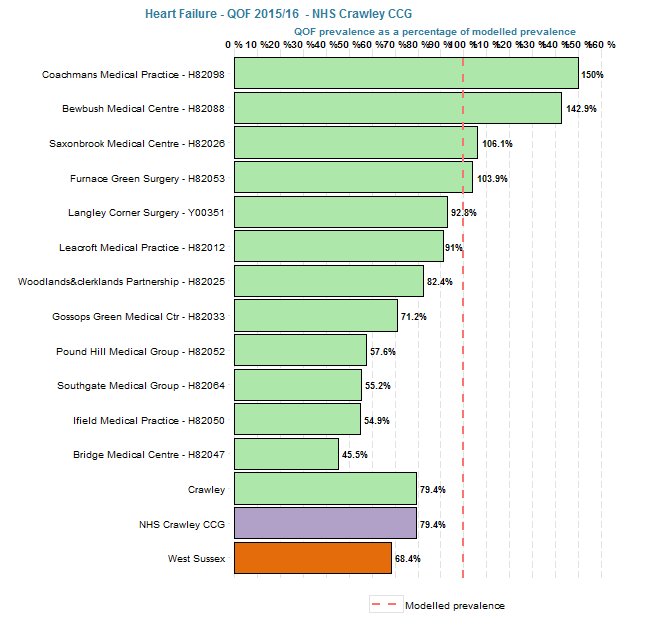Heart Failure
Heart failure is a condition that is caused by the heart failing to pump enough blood around the body at the right pressure. Common symptoms of heart failure include breathlessness, fatigue and ankle swelling. The risk of developing heart failure can be reduced by maintaining a healthy lifestyle such as taking regular exercise, eating well and by not smoking.
The graph below shows a breakdown of QOF (Quality Outcomes Framework) information for each locality (distinguished by colour) with each bar representing an individual practice. Each bar represents the percentage of people on GP registers compared to the modelled estimates for the condition. A value below 100% suggests that fewer people registered at a GP are recorded with that condition than the modelled prevalence estimates, and a value over 100% suggests that the prevalence of people registered at a GP exceeds the modelled prevalence of people with that condition at that surgery.
Comparing the registered with the predicted prevalence provides an estimate of an unmet, or undiagnosed need within the local population. It should be noted that prevalence figures are produced by applying nationally researched assumptions to each GP practice’s population and, as such, should be treated with some caution.
The figure shows that the QOF prevalence of heart failure for most GP surgeries in NHS Crawley CCG is smaller than the modelled prevalence. However, in Coachmans Medical Practice and Bewbush Medical Centre, the recorded prevalence of heart failure is much higher than the modelled prevalence estimates.

Data sources
- QOF: 2015/16 (published in November 2016)
- Practice Population: GP Practice Population (as at 31st March 2016)
- Prevalence Model: Kent, Surrey and Sussex 2002/3 (Majeed et al)